Tell us about your approach to photography. How it all started? What are your memories of your first shots?
Yaakov Israel (YI): I come from a family that exposed us kids to the arts in general and literature in particular. My father was a writer/journalist and my mother was an English teacher who loved reading. All three of us kids have many memories of our mother reading to us, story after story, as we fell asleep each night. Our house was packed with books of all kinds and we all were brought up with a great respect for the written word. Naturally I was sure I would be a writer too, but after a failed attempt at a novel and a few short stories as well as trying my hand at journalism at the local paper, I eventually understood that I wasn’t talented enough. I stumbled upon photography and learned what I could on my own and then took a basic course in B&W photography. From that point onwards I started investigating the medium till I eventually enrolled in the BFA program at Bezalel. Even Then I still wasn’t sure that this was something serious, I was just trying to expand my knowledge of the medium further.
As to remembering my first images, every now and then I come across an old slip case album at my Mom’s; with snap shots I took as a kid. There isn’t anything special about them, just the usual snaps of family life, but I can see a connection in the fact that I still deal with the way I experience the world through image making… this is of course a very loose interpretation.
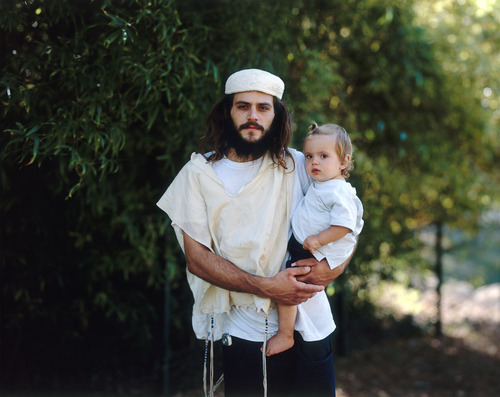
© Yaakov Israel, The Quest for the Man on the White Donkey
How did your research evolve with respect to those early days?
YI: My work today is focused on the same points of interest that I had during my years as a student. My images were always connected to social and political aspects that were linked to my life and the lives of the people around me. This is still interesting to me, but I find with time I have started to experiment and explore different ways of telling a story. So actually I haven’t strayed far from my initial intention to become a story teller, I just shifted the medium to photography.

© Yaakov Israel, The Legitimacy of Landscape
Tell us about your educational path. You have graduated from Department of Photography at the Bezalel Academy of Arts and Design, Jerusalem. What was your relationship with photography at that time?
YI: At a certain point I understood that I had become very serious about photography and I decided that if I was to spend 4 years in Art school I would benefit the most from being exposed to the best photographers in Israel, so Bezalel was somehow the natural place to go. I remember that I was looking for the school with the largest variety of teachers as I was interested in experiencing as much as possible, I was interested in everything about photography and wanted to try everything.
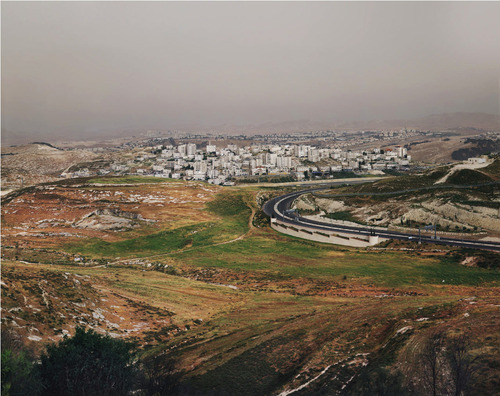
© Yaakov Israel, The Legitimacy of Landscape
What were the courses that you were passionate about and which have remained meaningful for you.
YI: Well I enjoyed many of my classes, but there were two classes that really stood out in my second year and thanks to them I figured out what it was that I was most passionate about and wanted to do: the first was a documentary class by Hally Pancer, who had so much passion for the medium that it was contagious, I owe Hally for encouraging me in my desire to work with 8x10. The second class was Landscape photography by Yosaif Cohain, from him I learned that photography was hard work and not just fun. Going out into the field with him I picked up the discipline one needs and even more important – the patience. Yosaif’s support didn’t end there, he saw how keen I was to get an 8x10 and knowing I was broke, he found out just how much I could scrape together and then went and bought me one for just that price on ebay. He also filled my freezer with 100 plates as a gift. Yosaif is still a very close friend and this camera is still the one I own and use today.
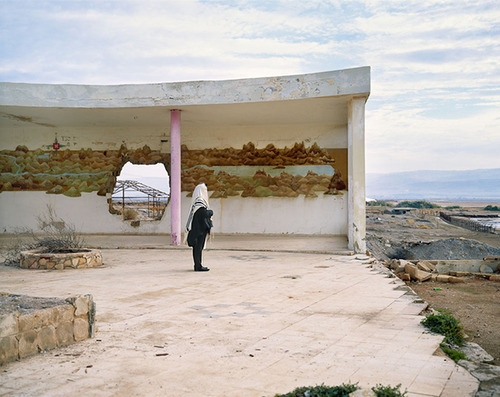
© Yaakov Israel, The Quest for the Man on the White Donkey
Any professor or teacher that has allowed you to better understand your work?
YI: So many people over the years helped me better understand my work that I feel it a bit unfair to single out names, but the ones at the top of the list for me were Igael Shemtov, Yossi Breger and Ruven Kupermam, because they not only enthused me, but really motivated me to go and do.

© Igael Shemtov, Har Homa 2009
Since 2004 you have been teaching photography at some of the most prominent art and photography schools and colleges in Israel. Tell us about this experience?
YI: Well it really just sort of happened. After I graduated, I received a scholarship and a private darkroom for an extra year of research in the photography department. In this year I was working towards a solo show in the department gallery, I could choose any professor to be my tutor and I could consult with any of the teachers. In return for all this I became a TA for 2 classes and who knew that by assisting I would learn so much?
The following year I was struggling to make a living by doing any commercial photography work that I could find and I was also focusing on finding the time to work on my projects. Then I got a phone call offering me a class at the department of photography at the Sapir Collage, I drove down South to meet the head of the department and the next thing I knew I was no longer a student, but a teacher and the rest just followed, more classes other departments etc.
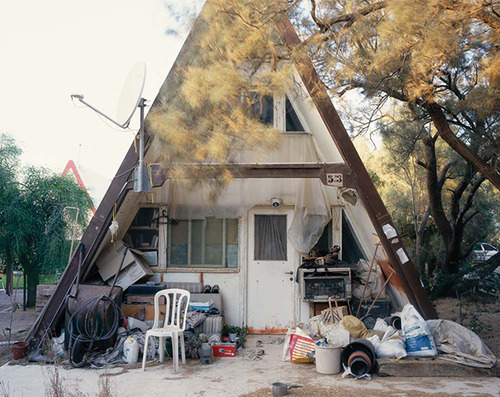
© Yaakov Israel, The Quest for the Man on the White Donkey
When I started teaching I thought this was a great opportunity to give back some of what I received from so many generous teachers. I like teaching because verbalizing things and discussing them helps me gain a deeper understand of them and teaching in the best schools means my student are smart and serious.
What do you think about teaching methodology in the era of digital and social networking?
YI: I’m a big user of all new technologies and today almost everything has gone digital, but funnily enough I haven’t changed my teaching methods, as in the end it’s all about what images we are after and not the tools we use or the technologies. A lot of what I teach is about observing and articulating ideas verbally and visually. It is this dialog between people that moves us forward and the more we expose and are exposed the better we understand ours and others work. The technological advancement I really think is worth focusing on is social networking, as this has presented us all with a fantastic way to share work within the ever growing photo community.
Your work has been widely exhibited across the world. What’s your general impression about the photo exhibitions world? What are the main threads and opportunities for a young photographer?
YI: I have been extremely lucky in the way “The Quest for the Man on the White Donkey” was received. I’m a big believer in working on a project till its really finished and this one took 10 years… so I always recommend first doing the work and only when you are sure that it’s finished to start looking for an audience.
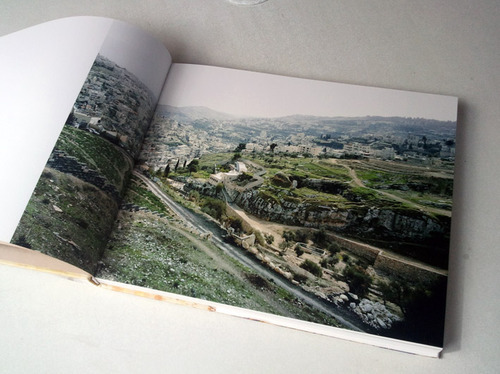
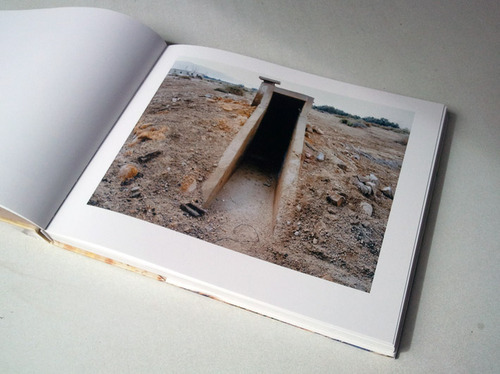

© Images of the book The Quest for the Man on the White Donkey
About your work now. How would you described your personal research in general?
YI: Since I started I have been working under the umbrella of the social and political aspects of my country. Using photography to try and better understand the place I live in. These are not just a phrases - my work reflects how these aspects reflect on my life on a daily basis. The way I integrate these realities in my work varies, when I started I was interested in creating stories that commented on reality (some of the projects that I’m still working on are based on this type of logic), but today I’m more interested in building photographic work that uses elements of reality to form fiction – one could call this a photographic novel, this is more like a narrative based on images made in a documentary style.
Do you have any preferences in terms of cameras and format?
YI: I’m interested in many ways of working, camera formats and the way each describes space. I am a strong believer in matching the tool to the project. I use medium format and 4x5 inch, but somehow the 8x10 inch camera works best for me. It’s a big, cumbersome and heavy apparatus that has many downsides, but I have found that all these reasons for not using it are the exact same ones that make it logistical for me to use it. The relative slowness makes me very focused when using it and it generates a photographic moment that is hard to create with other camera.
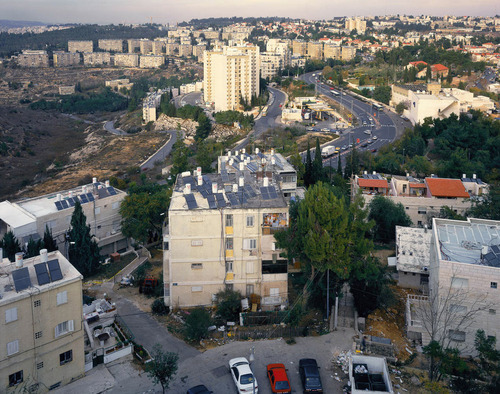
© Yaakov Israel, South West Jerusalem
Tell us about ‘South West Jerusalem’ project that started in your school days and is still ongoing?
YI: This project really started in black and white when I was in my second year. In my fourth and final year I came back to it with a new understanding that I wanted to concentrate on the way my biography was connected to this city. This understanding focused me on the working class neighborhoods I grew up in and still live in today - the neighborhoods of South West Jerusalem.
I started my exploration with my 8x10 inch camera, which I had just finished fixing. This was a place I knew very well and the type of excitement this project brought with it was based in rediscovering it. After a while, I found that I was focusing on portraits of the buildings from the side or the back, portraits of the inhabitants and landscape style images that were descriptive of the topography of these neighborhoods. Work on this project has actually never stopped, I keep trying to finish it up, but things keep changing and I want to capture these changes… at the moment I’m making the final images in this body of work, but finishing things up could take a year or two…
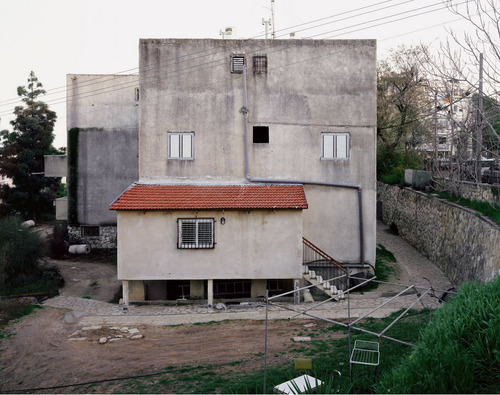
© Yaakov Israel, South West Jerusalem
Is there any contemporary artist or photographer, even if young and emerging, that influenced you in some way?
YI: I’m always following what is going on in photography. In past years many Artists and photographers have deeply influenced me to name just a few classics Walker Evans, Eugène Atget Robert Frank, Robert Adams and Henry Wessel. The list goes on and on. Now days I think my main inspiration is self-generated by the work itself.
Three books of photography that you recommend?
YI: 'Minutes To Midnight' BY Trent Parke, 'Story/No Story' BY Tobias Zielony, 'Johannesburg Photographs 1948-2010' by David Goldblatt.

© Tobias Zielony, Story No Story, Essay by Florian Ebner. Edited by Maik Schluter
Is there any show you’ve seen recently that you find inspiring?
YI: Sharon Yaari at Tel Aviv Museum and not so recently Joel Sternfeld at Foam, it was great to see the mini retrospective of all his projects.
Projects that you are working on and plans for the future?
YI: At the moment I’m trying to finish up two ongoing projects: ‘The legitimacy of landscape’ and ‘South West Jerusalem’. These are projects I started early in 2000 and feel it’s time to bring them to a close. As I’m the type of person who likes working on a several things simultaneously I have quite a few projects up in the air at the moment. They are all connected as they all stemmed from the same core interests but each took off on a different trajectory. At the moment I feel that the book format has become crucial to my working process and I have started to plan the outcome of my future projects as books, I am enjoying this stage immensely.
---
LINKS
Yaakov Israel
Israel
share this page
